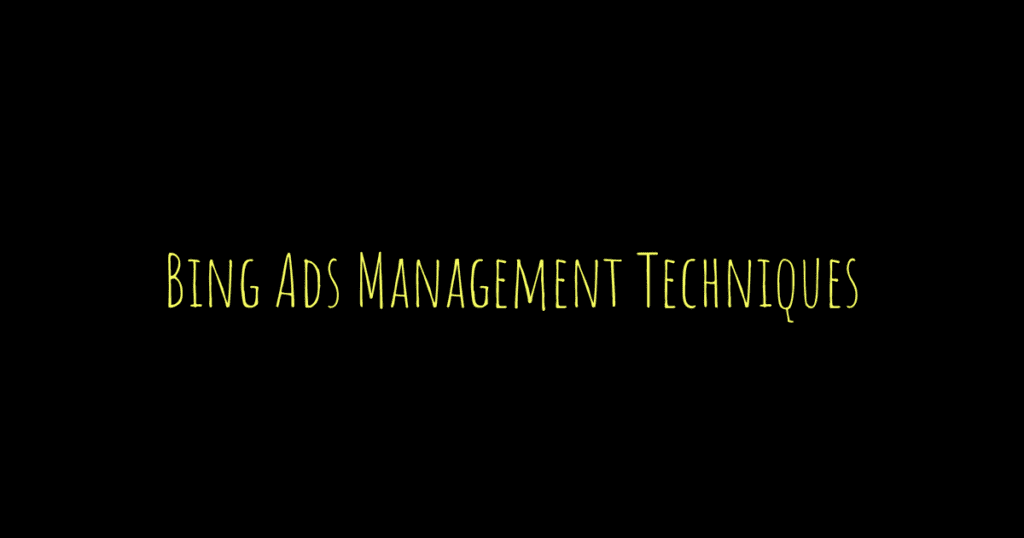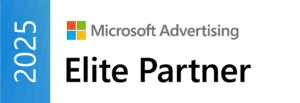In 2025, Bing Ads agencies can significantly boost their campaign performance by embracing innovative management techniques. Leveraging AI and automation tools like Copilot helps automate repetitive tasks, while Dynamic Search Ads facilitate real-time ad creation tailored to website content. Integrating with LinkedIn allows for hyper-targeted B2B campaigns by utilizing job titles and industries. Agencies should also explore diverse ad formats—such as video and shopping ads—to engage users effectively. Utilizing first-party data ensures compliance with privacy rules while enhancing audience targeting strategies. Additionally, smart bidding options enhance cost control, enabling agencies to maximize conversion rates while optimizing campaigns based on analytics insights.
1. Leveraging AI and Automation in Bing Ads

In 2025, leveraging AI and automation in Bing Ads will be crucial for maximizing efficiency and effectiveness. Tools like Microsoft’s Copilot can automate repetitive tasks, freeing up time for strategizing and creative work. For instance, automating bid adjustments based on performance metrics can lead to quicker responses to market changes. Dynamic Search Ads (DSAs) will allow advertisers to create ads in real-time, pulling content directly from their websites to ensure accuracy and relevance. This offers a significant advantage, particularly for businesses with extensive product catalogs. Meanwhile, Smart Campaigns will provide a hands-free approach to campaign management, automatically optimizing targeting and placements based on user behavior and historical data. This means that even small businesses with limited resources can compete effectively by utilizing these advanced features.
2. Integrating LinkedIn for Better Targeting
Integrating LinkedIn with Bing Ads opens up new avenues for precise targeting, especially in the B2B sector. With Microsoft Ads’ connection to LinkedIn, advertisers can access valuable professional data such as job titles, industries, and company sizes. For example, a software company can focus its ads specifically on IT managers in the healthcare sector, ensuring that the message reaches the right audience. By combining demographic filters with LinkedIn attributes, agencies can create highly relevant campaigns that resonate with decision-makers. This not only improves ad performance but also enhances the likelihood of conversions by ensuring that the content is tailored to the specific needs and interests of the target audience.
3. Enhanced Ad Formats for Greater Engagement
To capture audience attention in 2025, Bing Ads will increasingly utilize a variety of ad formats that cater to different campaign objectives. Advertisers should embrace not only traditional text ads but also incorporate image, shopping, and video ads to create a multifaceted approach. For instance, responsive search ads allow for dynamic combinations of headlines and descriptions, adapting to user queries in real-time. This flexibility can significantly boost engagement rates.
Video content is becoming essential for effective brand storytelling. Short, impactful videos can convey messages quickly and enhance emotional connections with the audience. Brands that invest in high-quality video ads can stand out in crowded search results and drive higher engagement.
Additionally, showcasing products directly in search results through Shopping Ads can increase visibility for e-commerce brands. By optimizing product listings with relevant keywords and appealing visuals, advertisers can attract more clicks and conversions. In this evolving landscape, leveraging these enhanced ad formats will be crucial for maximizing engagement and achieving campaign success.
- Dynamic Search Ads to capture more relevant queries
- Responsive Search Ads for flexible content presentation
- Video Ads for immersive storytelling
- Carousel Ads to showcase multiple products
- Image Extensions to enhance visual appeal
- Product Listings Ads for direct e-commerce integration
- Interactive Ads to boost user engagement
- Local Services Ads for targeting nearby customers
4. Utilizing First-Party Data Effectively
In 2025, effectively utilizing first-party data will be crucial for Bing Ads agencies. First-party data, which is collected directly from users, allows for highly targeted advertising while remaining compliant with privacy regulations. Agencies should prioritize this data in their audience targeting strategies, enabling them to connect with existing customers through tools like Customer Match. For example, if a user has previously purchased fitness equipment, agencies can create tailored ads that promote related products, enhancing the likelihood of repeat purchases.
Additionally, utilizing first-party data allows agencies to create lookalike audiences. By analyzing the characteristics of existing customers, agencies can identify and target potential new customers who share similar behaviors and interests. This approach not only improves ad relevance but also increases engagement rates.
Furthermore, insights derived from first-party data can inform personalized campaign strategies. For instance, if data shows that a segment of users responds well to promotional emails, agencies can design Bing Ads campaigns that mirror this approach, providing tailored offers that resonate with the audience. By leveraging first-party data effectively, agencies can drive higher ROI and foster stronger customer relationships.
5. Optimizing Shopping Campaigns for E-commerce
Shopping Campaigns are essential for e-commerce businesses looking to boost visibility and drive sales. These campaigns allow brands to showcase their products directly within search results. To optimize these campaigns, start by refining product listings with relevant keywords. This helps ensure your ads appear in front of the right audience. Regularly monitor product-level performance metrics, such as click-through rates and conversions, to adjust bids accordingly. For instance, if a particular product is performing well, consider increasing its bid to gain more exposure. Additionally, keeping an eye on seasonal trends can inform adjustments in campaign strategies, helping you to maximize your return on investment.
6. Voice Search Optimization Strategies
As voice search continues to gain popularity, optimizing Bing Ads for this medium is crucial. Start by targeting long-tail conversational keywords that mimic how people speak. For example, instead of just using “best pizza near me,” consider phrases like “where can I find the best pizza nearby?” This approach makes your ads more relevant to voice search queries. Additionally, modify your ad copy to reflect common questions and commands, enhancing its appeal to users of voice-activated devices.
It’s also essential to ensure that your landing pages are mobile-friendly and load quickly, as voice searches are often conducted on smartphones. A seamless user experience can significantly impact conversion rates. For instance, if a user asks for “good Italian restaurants in Chicago,” they should be directed to a mobile-optimized page that highlights the best options, complete with reviews and directions. By aligning your campaigns with the voice search trend, you can capture a growing segment of potential customers.
7. Implementing Smart Bidding Techniques
Smart bidding techniques are crucial for optimizing your Bing Ads campaigns in 2025. By leveraging AI-driven bidding options like Target CPA (Cost Per Acquisition) and Target ROAS (Return on Ad Spend), advertisers can significantly enhance their campaign performance. For instance, if your goal is to acquire new customers at a specific cost, Target CPA automatically adjusts your bids to help you achieve that target based on historical performance data.
It’s also important to continuously monitor and refine these bidding strategies. For example, if a particular campaign is performing exceptionally well, increasing the budget might be beneficial to capitalize on that success. Conversely, if a campaign is underperforming, adjusting bids downward can help control costs while you reassess your strategy.
Ultimately, the focus should be on maximizing conversion rates while keeping costs manageable. By analyzing performance metrics regularly, agencies can make data-driven decisions that enhance overall campaign effectiveness.
8. Improving Agency Collaboration and Communication
Effective collaboration and communication between agencies and clients are crucial for successful Bing Ads management. Selecting an agency with a solid reputation in Bing Ads is important. This means choosing partners who not only understand the platform but also prioritize strategic collaboration. Clear communication channels should be established to facilitate regular updates, performance reports, and feedback discussions. For example, having weekly check-ins or monthly performance reviews can ensure both parties are aligned on goals and expectations. Additionally, agencies that offer comprehensive service packages, including campaign management and optimization, can provide more cohesive strategies. This integration helps in addressing any issues promptly and allows for agile adjustments to campaigns based on real-time data and insights.
9. Effective Performance Tracking and Analytics
To ensure that Bing Ads campaigns are performing optimally, it’s crucial to leverage built-in analytics tools within Microsoft Ads. These tools allow agencies to monitor key metrics such as click-through rates (CTR), cost per click (CPC), and conversion rates in real-time. For a more comprehensive understanding, integrating these insights with Google Analytics provides a holistic view of campaign performance across multiple channels.
Regularly reviewing this performance data is essential. For instance, if a specific ad group shows a low CTR, agencies can investigate the ad copy, targeting, or bidding strategy to identify potential issues. Adjusting campaigns based on these metrics can lead to improved outcomes and better ROI.
An example of effective tracking could be a retail campaign where an agency notices that mobile users have a higher conversion rate. This insight can prompt adjustments in ad targeting and budget allocation to capitalize on this trend. Overall, diligent performance tracking and analytics can significantly enhance campaign effectiveness.
10. Strategic Ad Scheduling and Geographic Targeting
Ad scheduling and geographic targeting are crucial techniques for maximizing the effectiveness of Bing Ads campaigns. By implementing ad scheduling, you can choose specific times to run your ads when your target audience is most active. For example, if your data shows that users are more likely to click on your ads during weekday evenings, you can set your campaigns to run only during those hours. This strategic timing helps optimize your ad spend and increases the chances of conversions.
Geographic targeting allows you to focus on specific regions where your products or services are in higher demand. If a retail brand has seen significant sales in urban areas but less in rural regions, they can tailor their campaigns to target cities specifically. Additionally, adjusting your campaign settings based on performance insights from various demographics and locations can further enhance results. For instance, if a particular ad is performing well in California but not in Texas, reallocating your budget can help maximize ROI. Combining ad scheduling with geographic targeting creates a more refined approach that aligns your marketing efforts with user behavior and preferences.
Frequently Asked Questions
1. What are Bing Ads management techniques for 2025?
Bing Ads management techniques for 2025 include using AI tools for optimization, focusing on audience targeting, and integrating multi-channel strategies to improve campaign effectiveness.
2. How can I improve my Bing Ads performance using new techniques?
You can improve your Bing Ads performance by utilizing advanced analytics, experimenting with dynamic ad formats, and regularly updating your keyword strategies based on market trends.
3. What role does data analytics play in managing Bing Ads?
Data analytics helps you understand customer behavior, track campaign performance, and make informed decisions to adjust your strategies for better results.
4. Why should I consider an agency for Bing Ads management?
An agency can offer expertise in managing complex campaigns, access to advanced tools, and the ability to stay updated with the latest trends and changes in the Bing Ads platform.
5. What trends should I watch for in Bing Ads management for 2025?
Trends to watch include increased emphasis on automation, personalized advertising experiences, and the integration of social media strategies with search ads.
TL;DR In 2025, Bing Ads agencies can enhance campaign effectiveness by leveraging AI and automation tools, integrating LinkedIn for precise targeting, and using diverse ad formats for higher engagement. Utilizing first-party data ensures compliance with privacy regulations while optimizing shopping campaigns increases visibility for e-commerce. Voice search strategies adapt to new consumer behaviors, and smart bidding techniques maximize returns. Fostering agency collaboration, effective performance tracking, and strategic ad scheduling enhances overall outcomes in a competitive digital landscape.



